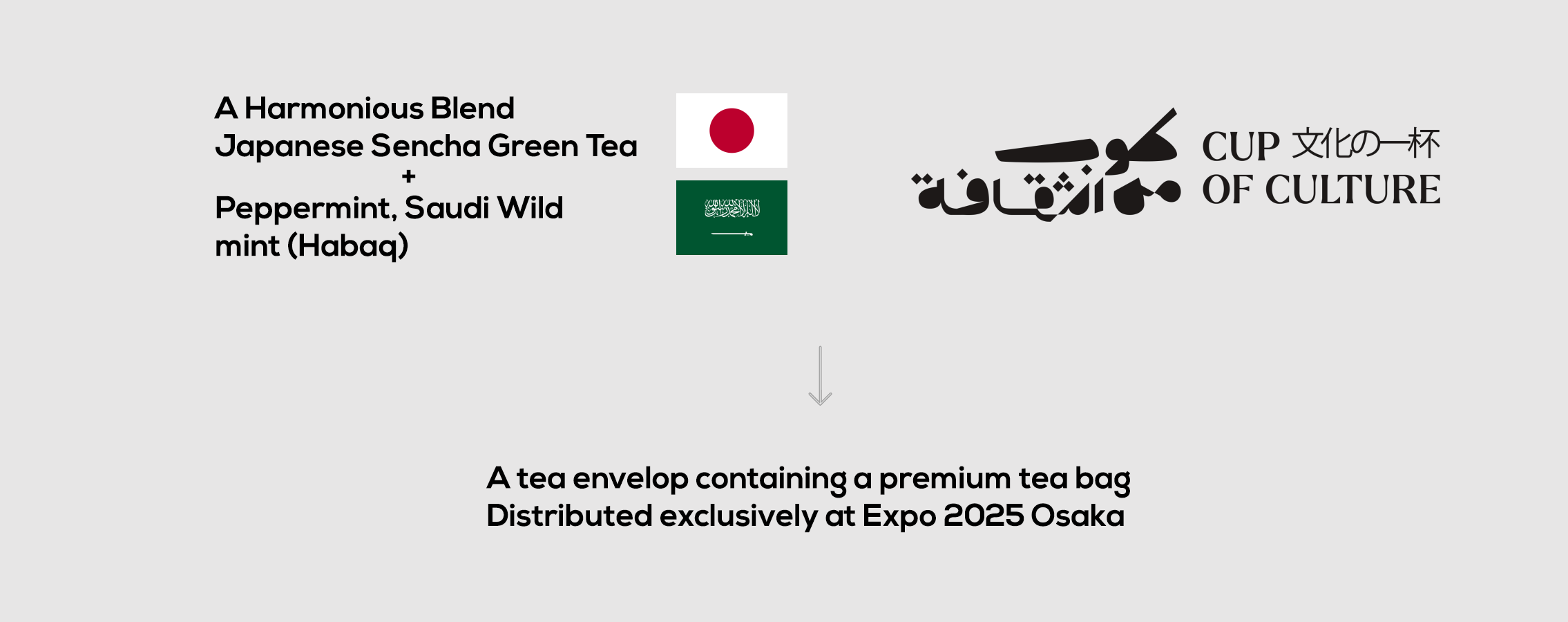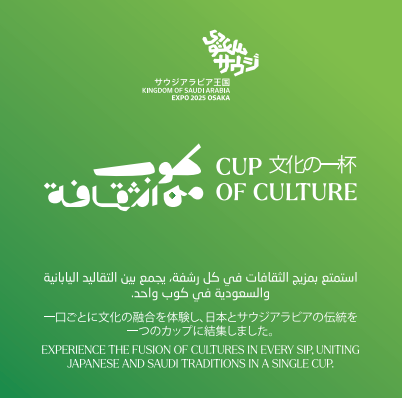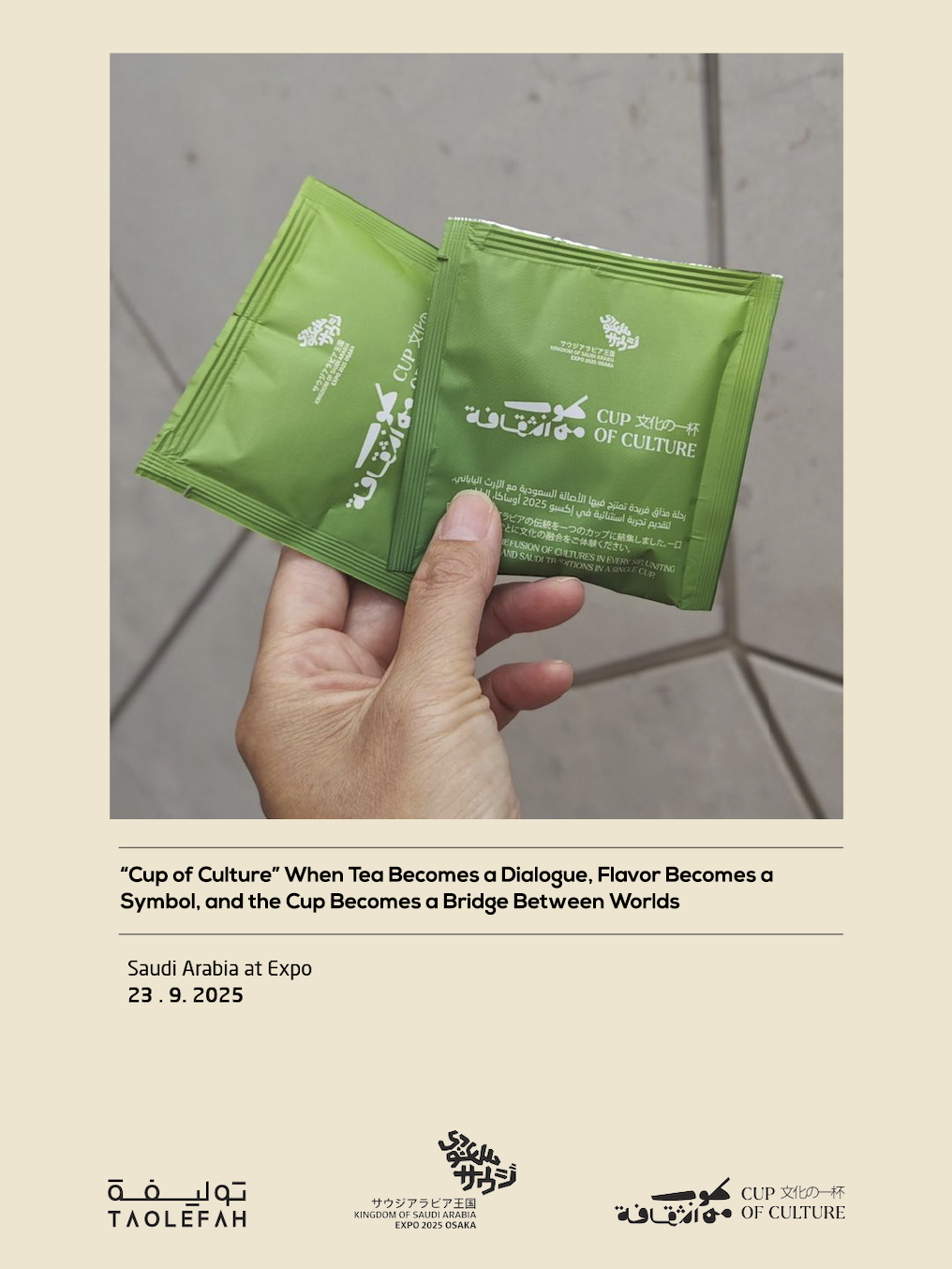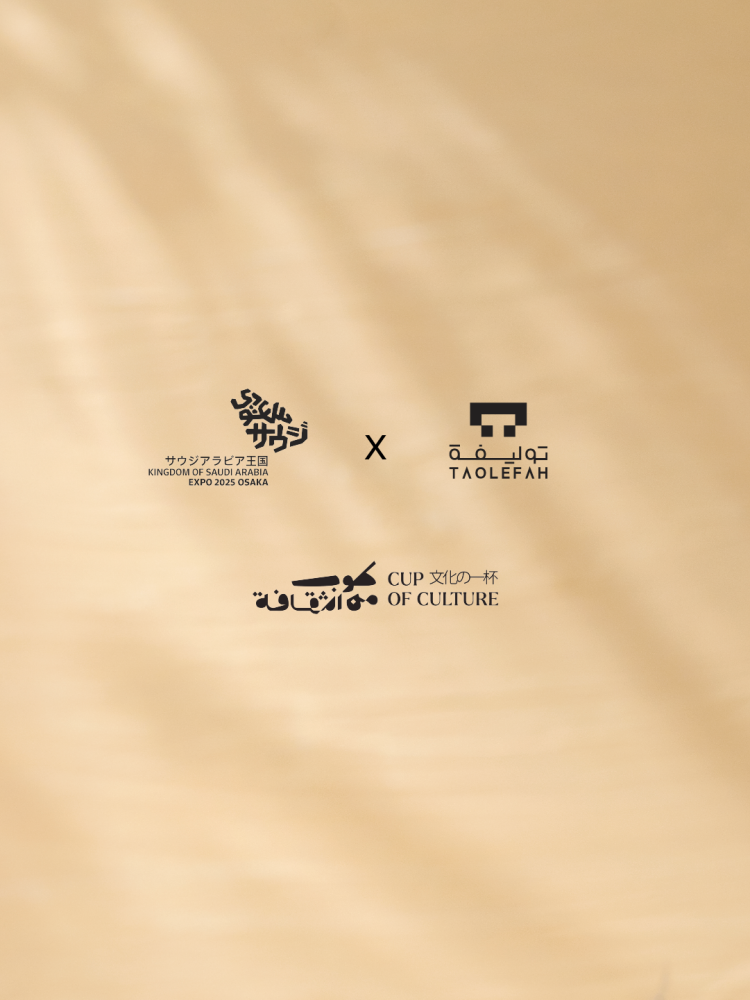Cup of Culture: When Tea Becomes a Dialogue, Flavor Becomes a Symbol, and the Cup Becomes a Bridge Between Worlds

At the heart of every civilization, there lies a moment of stillness — a moment of reflection, a quiet gathering around a warm drink. Across languages, beliefs, and borders, tea remains one of humanity’s shared rituals — in the precise ceremonies of the Japanese, the generosity of Arab hospitality, the closeness of friendships, or the solitude of personal contemplation.
When Taolefah, supported by the Saudi Ministry of Culture, introduced the “Cup of Culture” during Saudi Arabia’s participation at Expo 2025 Osaka, it was not simply unveiling a new tea blend. It was offering a silent, universal language — a message that required no translation. More than a product, this cup held an idea.
This wasn’t merely a flavor innovation — it was a symbolic expression of dual heritage. On one side: Japanese Sencha green tea, deeply rooted in a tradition that views tea as a way of being, where every gesture — from boiling, to pouring, to sipping — carries meaning. On the other: Saudi Habaq (wild mint) and spearmint, aromatic plants inseparable from Saudi culture — not only as ingredients but as social and spiritual presences, found in gatherings, healing rituals, and collective memory.

Between the Ceremony of Sencha and the Spirit of Habaq
Japanese tea — especially Sencha — is never just a drink. It belongs to a philosophy where simplicity is perfection and silence is a language. A cup of Sencha invites gratitude, slowness, and mindfulness in an accelerating world. In Saudi culture, mint and Habaq call to warmth, rest, and the grounding comfort of familiarity — they are fragrances of home, of welcome, of rhythm.
When these two worlds meet in the Cup of Culture, we receive more than a blend of herbs — we witness a meeting of worldviews: one that finds beauty in precision, and another that finds intimacy in openness.
This cup becomes the distillation of a conversation not spoken, but steeped — not written on paper, but brewed in hot water — unfolding gently, like the intentions that open when hearts gather without preconditions.

A Symbol You Can Drink
Many products carry messages. Few carry symbols you can taste. Cup of Culture is one of those rare creations that transcends its physical purpose to become a living metaphor. It doesn’t sell a recipe — it tells a story: of connection, not conflict; of difference, not division; of roots stretching from deserts to mountains, from camellia rituals to the rising scent of Habaq.
It is, in other words, a transparent bridge between shores, built not of steel, but of flavor, intention, and mutual respect.
Philosophy in a Sip
To find philosophy in a cup of tea may seem an exaggeration — but isn’t life itself formed from the smallest of details?
In a single sip, one can experience heat, bitterness, softness, and clarity. This is what the Cup of Culture offers: a new meaning to that moment. It makes no claim to global peace, but it does believe that deep change begins in small, human moments — in something familiar, something shared, a ritual where we meet the Other not with suspicion, but with warmth.
The Final Word: Tea Is Never Just Tea
In the end, Cup of Culture is not simply a consumable — it is a lived experience, a sensed message, a thoughtful idea.
It is an invitation to reconsider the most ordinary acts in our lives and ask:
Can a cup of tea embody a civilizational vision?
Can it express a philosophy of life?
Can it be a tool of peace?
Perhaps the answer is yes. Perhaps all we need is to sip slowly — and listen to flavor as if it were a word.
With deep appreciation to the Saudi Ministry of Culture for supporting this unique initiative and enabling Saudi culture to be shared with the world in such a refined, vibrant, and deeply human way.


